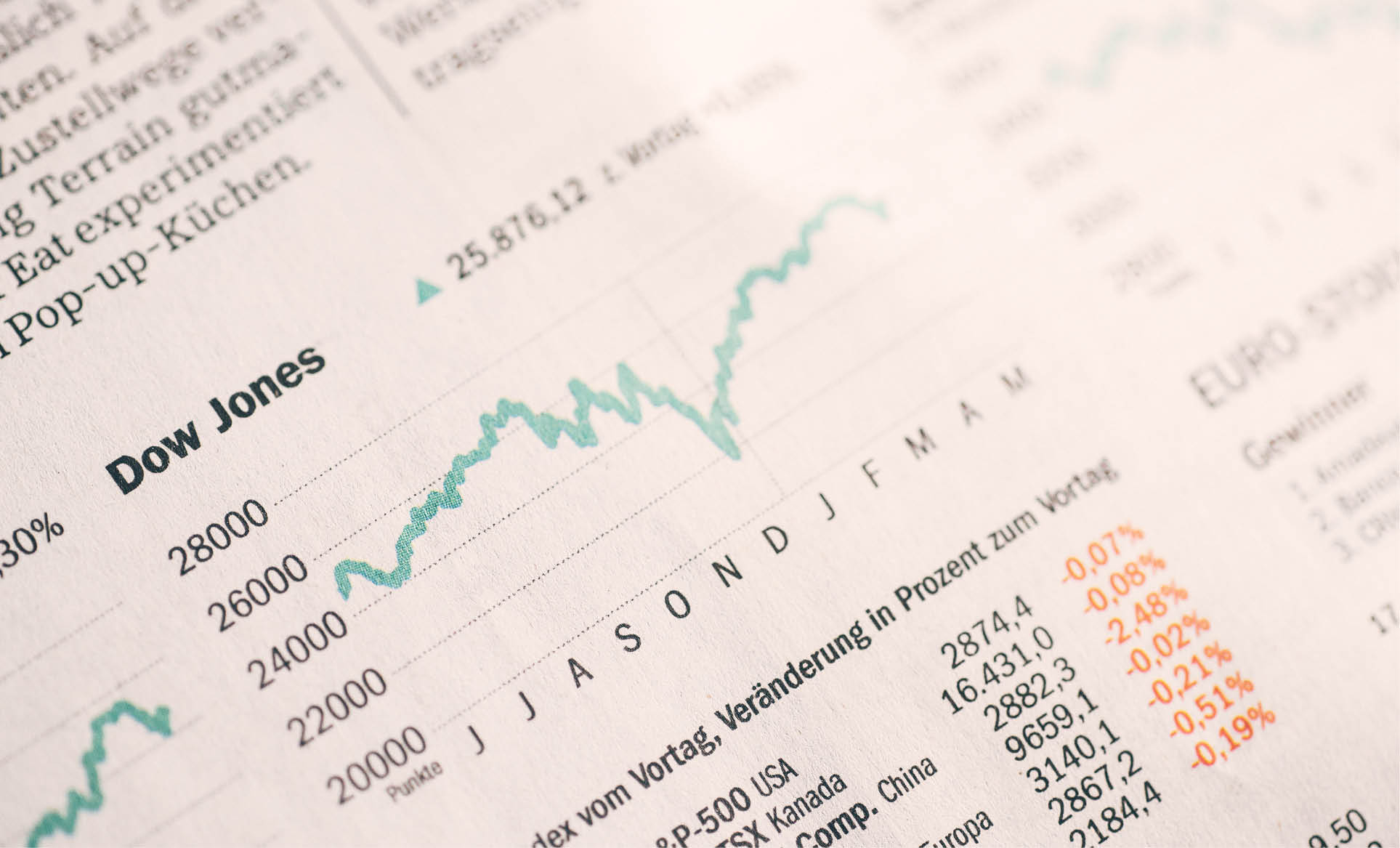


Throughout the past few months, Glion students have been exposed to lively debate and cutting-edge thinking through a special series called Leading Hospitality Through Turbulent Times. We invited experienced journalist Stuart Pallister to sit in on some of the sessions – here is his report on the first of two sessions hosted by our Director of Graduate Studies, Emmanuel Jurczenko, and featuring finance lecturer Michel Girardin, where the world’s economic prospects were very much up for discussion.
It may have been something of a spoiler, as he was effectively revealing his conclusion right at the start of his first presentation in the ‘Leading Hospitality Through Turbulent Times’ series, but Michel Girardin, a lecturer in Macro-Finance at the University of Geneva, was unequivocal in his verdict: “The good news is that there is light at the end of the tunnel.”
Michel, who has experienced many financial crises in his career – such as the stock market crash of 1987, the Asian financial crisis of 1997-1998 and the Great Recession of 2008-2009 – outlined the reasons why he had arrived at the conclusion that the “worst is over,” with his presentation structured in what he termed three ‘chapters’:
- Chapter 1: COVID-19 impact on economies – what to look for.
- Chapter 2: Recession watch – “We are right now in the middle of the transition from recession to recovery”
- Chapter 3: Recovery – will it be V, L, W or U-shaped?
Chapter 1: The impact of COVID-19 on economies
Michel took participants through several key charts. First, a graph comparing three countries: China, Italy, and the US. “China has the profile that we want to see, what I call the ‘infection inflection’, where the curve is no longer exponential. This is the profile we want to see, with the progression slowing down.
“This is what we call the inflection point. This point is being reached in the US and has been reached in Italy.”
He argued it was important to take into account fatalities rather than cases, as the latter depends on a country’s capability to carry out testing. “So the fatality number is closer to what’s really going on.”
In terms of fatalities per million, he argued, there were 250 per million in the US at the time of the presentation, “virtually zero” in China, and around 600 per million in Spain. “The first piece of good news here is that – from a purely objective standpoint – the numbers don’t look outrageously high in relative terms.”
And there was more encouraging news. There had been a slowdown in the number of fatalities, he said, and the trend was going down.
Chapter 2: Recession watch
How deep will the recession be and how long will it last?
“Clearly, this pandemic is the most serious global health crisis we’ve had since the ‘Spanish flu’ of 1918 (which took the lives of millions of people). And it’s set to become one of the costliest crises economically,” said Michel.
However, whereas the Spanish flu mainly had an impact in terms of a reduced supply of labor, the impact of COVID-19 will mainly see a fall in consumer demand.
As for the impact of the pandemic on economic growth, “we can estimate that, for each month of a large-scale shutdown, GDP falls by roughly 20-25% on a monthly basis; and this translates into a 5-7% annual drop in world GDP”.
Michel added that the Q2 numbers look “really appalling”, with Italy posting minus 30% growth and the US minus 12%.
“We are right now in the midst of the recession,” he said. “But we should see some rebound in Q3, going into Q4.” The forecast for world growth in 2020 is minus 5.7%, with regional differences.
“The direct impact of the complete shutdown is huge,” he added. But the growth forecast from Moody’s Analytics for the hospitality and travel sector looks “a bit on the low side” at around 1%.
As for the US economy, Michel pointed out that “what really matters is consumption”, which accounts for some two-thirds of the economy. In addition, as the US economy accounts for about 23% of the world economy, he estimates that some 18% of world growth “is in the hands of US consumers”. Consequently, the hit that consumer spending is taking in the US is going to directly affect world GDP.
Michel identified some ‘recession triggers’ with regard to jobless claims in the US. There has been a “staggering rise” in the US unemployment rate, not seen since the Great Depression (of the 1930s), when the unemployment rate hit 25%. However, the authorities have learned the lessons from the 1930s, when monetary and fiscal policies “were kept way too tight after the Wall Street Crash of 1929. This is what triggered the Depression,” he explained.
With governments and central banks currently injecting billions of dollars into their economies, “we can be more optimistic about the recovery”. The US Federal Reserve had announced – coincidentally on March 23rd, when the number of fatalities peaked globally – that it was prepared to inject whatever was needed in terms of liquidity into the US economy, without limit.
Employment drives consumer confidence, Michel said. Although the sharply rising unemployment rate is triggering a fall in consumer confidence, he added: “It’s important to understand that even when the news flow is still negative – but less so (going, say, from minus 30% or 40% to minus 20%) – that can be the end of the recession.”
As the financial markets are forward-looking and searching for some sort of improvement, that would be enough for confidence to return and recession to end.
“Clearly the stock market is anticipating that things are going to get better. It’s the inflection point that matters. Again, even when consumer confidence goes from minus 60% to minus 20%, it’s still negative but increasing – and that’s enough for the stock market to call the end of recession and, therefore, light at the end of the tunnel.
“There’s going to be a world post COVID-19 and people will return gradually to normality. And that’s what matters to the stock market.”
In making his analysis, Michel prefers to use consumer confidence data which is ‘high frequency’, based on monthly figures, rather than ‘low frequency’ GDP numbers which are updated over several months. With consumer confidence data, “you see the tight correlation to what’s happening in the labor market”. And that means “you’re able to identify very precisely and in a timely way the end of a recession”.
Chapter 3: From recession to recovery
“The scenario I’m banking on is a U-shaped recovery,” Michel said, which will be gradual to avoid a second wave of COVID-19. The Swiss authorities have called for an approach which involves going as fast as possible, but as slowly as necessary, he added.
Michel believes Sweden’s approach of ‘fast and safe’ should be a common aim. “If we delay the recovery, we might lose some growth.”
As for the leisure and travel industry, which is currently facing a liquidity crisis, it will be crucial that this does not turn into a default crisis as that would mean a permanent loss in growth.
“Favor as much as you can a quick recovery but also monitor the risk of a second wave. The risk is that the longer we keep this lockdown, the more gradual the recovery and the greater the risk that we permanently lose jobs and growth.”
One bright spot though is that oil prices are very low. “I say oil prices to the rescue,” he concluded.
“We want economies to benefit from fiscal and monetary policies, which are reflationary or expansionary, to help boost demand which is really important.”
“It’s a tricky balance but clearly we need to find a way to get people back to work but also take precautions. Let’s manage the risk of the second wave carefully, but clearly the worst is behind us.”
A ‘black swan’ vs. a ‘white swan’
Asked how this recession is different to previous ones, Michel replied that whereas the Great Recession of 2007-2008 was a ‘white swan’ caused by excessive debt levels, the current COVID-19 is a ‘black swan,’ something that is unlikely but, if it happens, has disastrous implications.
“This is a different animal. Debt is not the problem. Actually, debt here becomes the solution,” He said. Debt will increase as governments and central banks inject huge amounts of money into businesses and save jobs. “Clearly, there’s a whole debate on how we should finance it, but debt is not why we got the crisis. It’s actually the solution to get us out of a depression and avoid what happened with the Great Depression in the 1930s.”

















